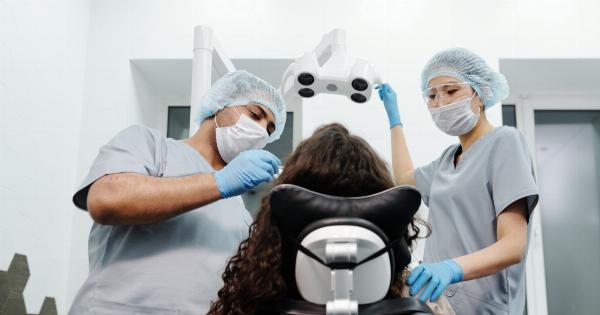Cancer is a devastating disease that affects millions of people worldwide. The conventional treatments for cancer, such as chemotherapy and radiation therapy, have been effective in many cases, but they also come with various side effects.
This has led to the exploration of alternative cancer treatments that can complement or enhance the effectiveness of traditional therapies. One such alternative treatment that has gained attention is Oxygen Therapy.
Understanding Oxygen Therapy
Oxygen therapy is a medical treatment that involves administering high levels of oxygen to a patient. This therapy can be delivered through various methods, including through a mask, nasal tubes, or even a hyperbaric chamber.
The aim of oxygen therapy is to increase the supply of oxygen to the body’s tissues and promote healing.
The Role of Oxygen in Cancer
Oxygen plays a crucial role in the functioning of all cells in our body, including cancer cells. However, cancer cells have a unique characteristic known as the Warburg effect.
This phenomenon refers to cancer cells’ ability to generate energy through a process called anaerobic glycolysis, even in the presence of sufficient oxygen.
The Warburg effect allows cancer cells to survive and grow in low-oxygen environments, which is often the case in tumors.
Moreover, the hypoxic (low oxygen) conditions within tumors can contribute to the resistance of cancer cells to traditional therapies like radiation and chemotherapy.
Impact of Oxygen Therapy on Cancer Cells
Oxygen therapy works on the principle that high levels of oxygen can create conditions unfavorable for the growth and survival of cancer cells.
By increasing the oxygen supply to the body’s tissues, oxygen therapy aims to reverse the hypoxic conditions within tumors, making cancer cells more susceptible to conventional treatments.
Studies have shown that hyperbaric oxygen therapy (HBOT), a type of oxygen therapy that involves breathing pure oxygen in a pressurized chamber, can enhance the effectiveness of radiation therapy.
The increased oxygen levels during HBOT can make tumor cells more sensitive to radiation, leading to improved tumor control.
Furthermore, oxygen therapy can help to strengthen the immune system and improve overall well-being in cancer patients. Oxygen plays a vital role in cellular energy production and can promote tissue repair and regeneration.
By enhancing oxygenation, oxygen therapy can support the immune system in fighting cancer cells and aid in the recovery process.
Methods of Oxygen Therapy in Cancer Treatment
There are various methods by which oxygen therapy can be administered to cancer patients:.
1. Hyperbaric Oxygen Therapy (HBOT)
HBOT involves the patient entering a hyperbaric chamber where they breathe in pure oxygen at increased atmospheric pressure.
This method increases the amount of oxygen dissolved in the patient’s blood, allowing for enhanced oxygen delivery to tissues and cells.
2. Oxygen Concentrators
Oxygen concentrators are devices that extract oxygen from the air and deliver it to the patient through nasal tubes or a mask. These concentrators remove impurities from the air, providing a higher concentration of oxygen for the patient.
3. Liquid Oxygen
Liquid oxygen is a highly concentrated form of oxygen that can be used by cancer patients. It is stored in a portable container and administered through a mask or nasal cannula.
4. Topical Oxygen Therapy
Topical oxygen therapy involves the application of oxygen to specific areas affected by cancer, such as wounds or radiation-induced skin reactions. This method aims to support healing and improve tissue oxygenation in localized areas.
Benefits and Considerations of Oxygen Therapy in Cancer Treatment
The use of oxygen therapy in cancer treatment has several potential benefits:.
1. Enhanced Tumor Sensitivity
Oxygen therapy can increase the sensitivity of cancer cells to radiation therapy, making it more effective in destroying tumors. This can lead to improved outcomes and increased tumor control rates.
2. Improved Healing and Recovery
Oxygen plays a crucial role in the healing process. By increasing oxygen supply to tissues, oxygen therapy can promote wound healing, reduce the risk of infection, and support overall recovery in cancer patients.
3. Strengthened Immune System
Oxygen therapy can boost the immune system’s ability to fight cancer cells. Adequate oxygenation supports immune cell function and enhances the body’s defense mechanisms against cancer progression.
4. Reduced Side Effects
Some conventional cancer treatments, such as radiation therapy, can cause damage to healthy tissues surrounding tumors.
Oxygen therapy has the potential to reduce these side effects by improving tissue oxygenation and promoting the healing of healthy cells.
While oxygen therapy shows promise in cancer treatment, it is important to note that it should be used as a complementary therapy alongside conventional treatments.
More research is needed to determine the optimal protocols, dosages, and patient selection criteria for oxygen therapy in cancer.
Conclusion
Oxygen therapy has emerged as a potential adjunctive treatment in cancer care. By increasing tissue oxygenation, oxygen therapy aims to improve the effectiveness of conventional cancer treatments like radiation and chemotherapy.
It can enhance tumor sensitivity, promote healing, strengthen the immune system, and reduce side effects. However, further research is necessary to fully understand the benefits and limitations of oxygen therapy and determine the best approaches for its application in cancer treatment.























